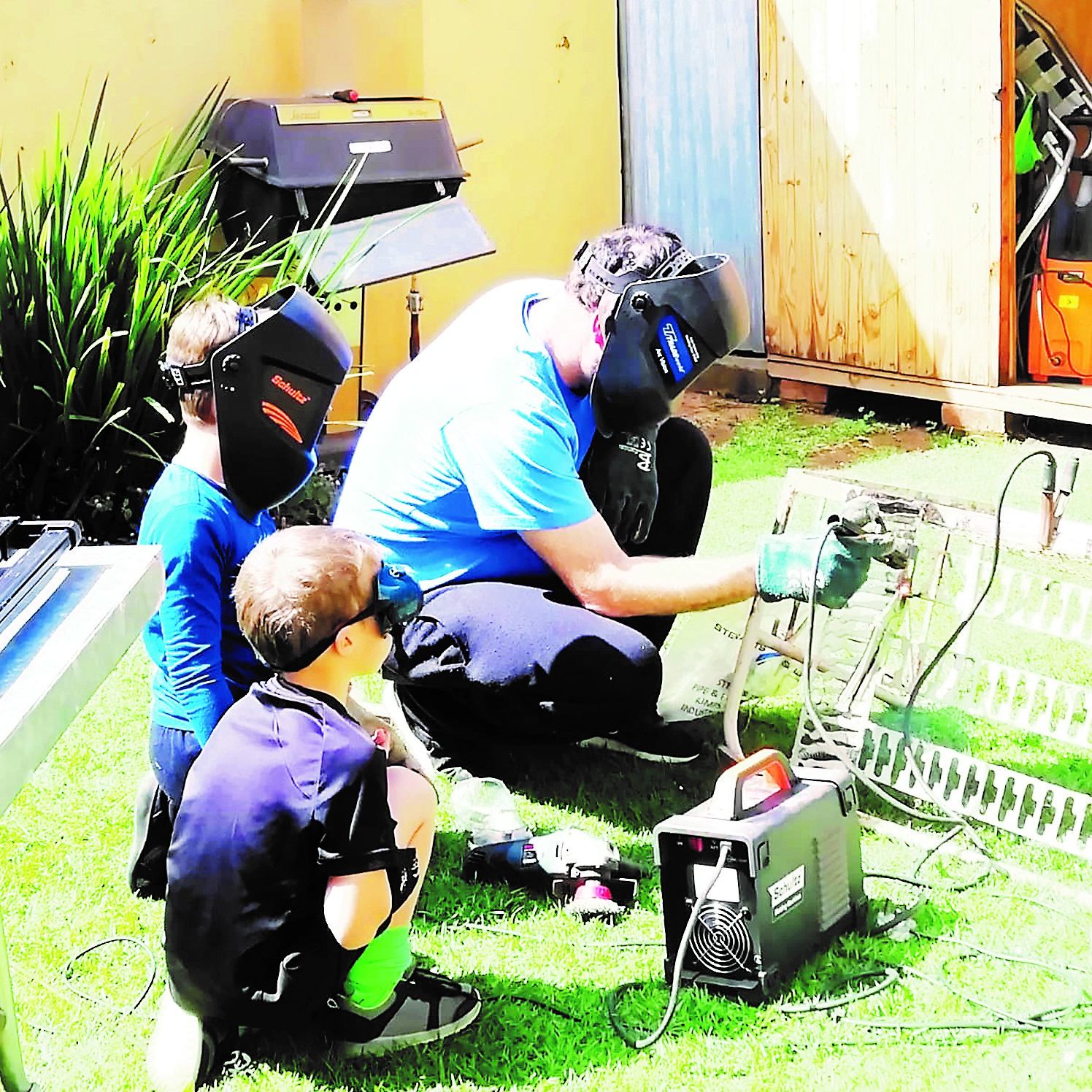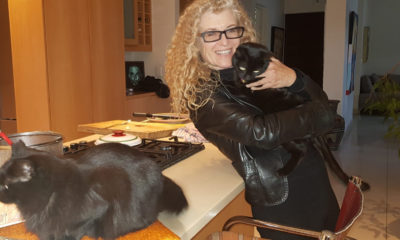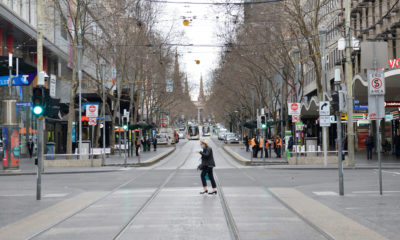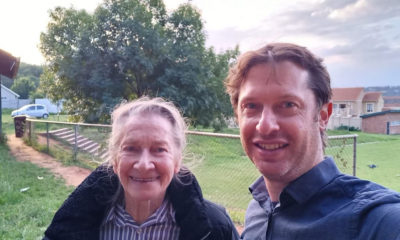
Featured Item

When the cracks start to show
Having largely been confined to our four walls over the past few months, many of us have finally tackled those home-improvement projects. Whether we’re doing it ourselves or enlisting the experts, repairs, redecorations, and renovations have become lockdown trends.
“We used to leave our homes for work at 07:00, and we’d return only at 19:00,” says renowned interior designer and interior architect, Glenda Lunsky, the chief executive of Glenda Lunsky and Associates. “Our homes, for which we paid this massive amount, were essentially empty. Now’s the time for people to really enjoy their homes, to reflect on their hard work.”
Yet, because we’re always home, we’re also noticing the flaws in our space. We’re seeing the chips in the paint, the rust on the bench, and the clutter that surrounds us. Whether you’re a DIY fundi or have a new drive to get fixing, it’s the perfect time to spruce up your home. Indeed, hardware stores have reportedly experienced an e-commerce boom.
Longtime amateur handyman Larry Nussbaum used lockdown to spruce up his home and teach his two sons – aged six and nine – the tools of the trade. “DIY work is a great hobby of mine,” says Nussbaum. “Over lockdown, I’ve done some plumbing and electrical work, but I also made it a point to get my kids involved. We did some plastering, and I taught them how to weld and spray paint. Together, we refurbished some old steel garden furniture. I wanted them to have something that they could see and play with so they could feel proud of what they’d accomplished.”
While he’s a network engineer by profession, Nussbaum believes in the benefits of developing practical skills. “With basic skills, you can always earn an income,” he says. “My dad has always been into DIY, and in fact gave up his day job and used those skills to make a living as a handyman. I have ADHD [Attention Deficit Hyperactivity Disorder] and so does one of my sons. A big drive of mine is to give my sons, especially the one with ADHD, the skill and confidence to know they can do anything.”
Sivan and Ryan Lapidus’s offer to purchase a cluster house was accepted soon after lockdown began. “We asked ourselves whether we were making the right decision at the right time,” says Sivan. “But we decided to go ahead because if ever there was a need for a spacious family home, it’s now. We’ve just taken transfer, and we’re kicking off a big renovation. I have a background in design, so I always wanted a place that we could make our own.”
Sivan has been planning the renovation throughout lockdown while juggling work and motherhood. “While it was hectic in the beginning, it slowed things down and gave me the time to think about what I really wanted aesthetically and practically. We’ll be spending a lot of time in our homes for the foreseeable future, so it’s forced me to consider how to make a happy, open-plan space we’ll enjoy as a family.”
Along the way, Sivan won a bathroom renovation through the DADOquartz Dream Bathroom Design Competition. “I put together a detailed mood board of what I wanted to be in our bathroom, and the judges chose my design!”
Lockdown has brought challenges though. “Traditionally you’ll go from store to store looking for things like tiles,” says Sivan. “I’ve had to do a lot of browsing online.” She’s also had to rethink the renovation process, ensuring there are safety protocols in place and limited teams on site at one time.
We may not all be renovating, but most of us have had to reimagine our space during the pandemic. “From a home for entertainment, we’ve changed to a home for functionality,” says Martine Abrahams, the co-founder of home decor company Interior Hub. There’s a move to multifunctional spaces, she says. Many of us have had to create home offices or repurpose the dining room to become our children’s base for online learning. “We’re buying plastic covers for tables so kids can draw on them, and updating our dining room chairs to make them more practical and comfortable.”
Creating a home-office space is often as simple as changing a room’s layout. “For one client who’d moved her desk to the lounge and was feeling claustrophobic, we made the space flow and created a separate work nook,” says Abrahams. “We took her desk to the sunny side of the room, and played with the layout of her living and dining room.”
Lunsky has also helped her clients rearrange their spaces. “Many are saying they’re tired of looking at their four walls and need to change something,” she says. “Often we’ve just rearranged paintings. We’ve shuffled around an entire house of pictures and hung them at the right height – eye level plus down because you look down into a picture. It’s made a huge difference, people can’t believe it.” Even placing a throw or quilt onto a couch, which many are doing, can make an impact, she says.
Lighting is also key, says Lunsky. “New lighting can transform a room and alter your mood.” It’s all about the right globes, light fittings, and the placement. “Great interior design or decorating is about how clever and talented you are, not how much you spend.”
When upgrading your home, it’s important to use people that you know, says Lunsky. Working with a specialist will ultimately save you money. Like many industries, interior-design specialists are battling at this time, she says. Survival comes with networking, having multiple clients, adapting to people’s needs and budgets, and helping them to feel good in their homes.
As people clear their minds, they’re starting to clear out their homes, says Lunsky. They want efficient ways to manage and use space creatively. Often they realise they have too much furniture in a room which affects their headspace.
“People have decluttered and compartmentalised their lives since lockdown began,” says Abrahams. “Plastic boxes from West Pack Lifestyle and woven boxes from Mr Price are big sellers now.”
Many are also looking to artists to brighten up their homes. Megan Shapiro, who runs a dog walking business, rediscovered her love for painting when lockdown began. “I’m 35, and the last time I painted this much, I was in matric,” she says. Making a painting for her daughter’s room not only awakened Shapiro’s creativity, it eased her mind. “It was probably the calmest I felt during that period.”
Not expecting a huge response, Shapiro decided to advertise her paintings when lockdown eased. Her work has since become so popular, she’s started a painting business on the side. “Because my prices are so low, I captured attention. People want their homes to look beautiful, but they don’t want to spend a fortune. Money wasn’t my goal, I just wanted to paint, which resonated with people.” A great believer in energy, Shapiro hopes the catharsis she finds through painting passes on to those who purchase her work.










